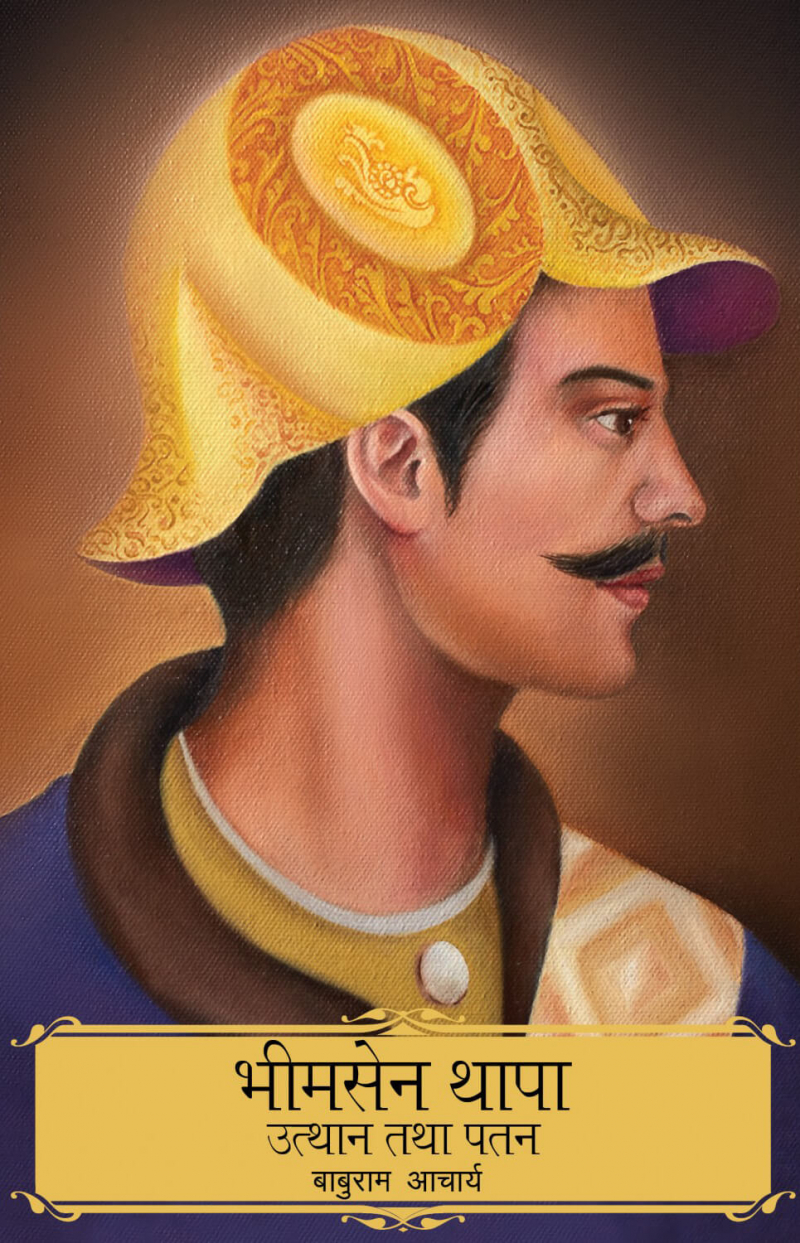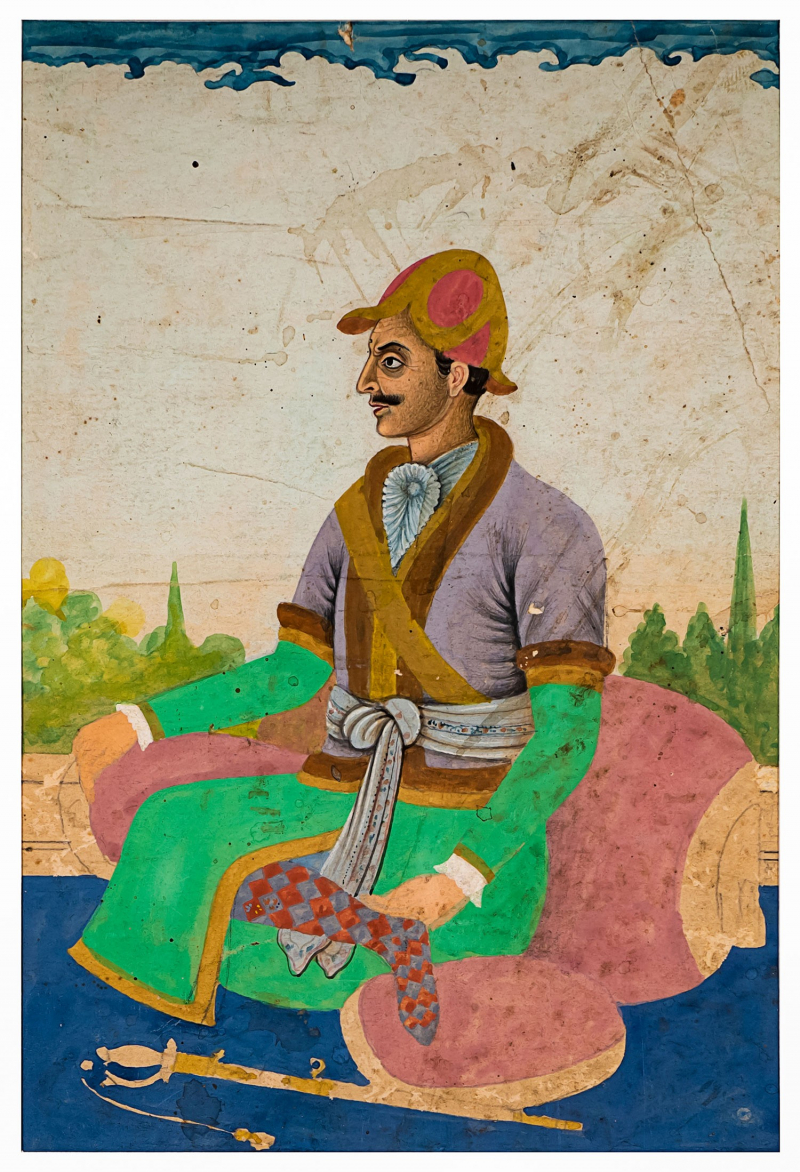Bhimsen Thapa
Bhimsen Thapa (August 1775 - 29 July 1839) was a Nepalese statesman who served as the Mukhtiyar (equivalent to prime minister) and de facto ruler of Nepal from 1806 to 1837. He was inducted into the "National heroes of Nepal" by King Mahendra Bir Bikram Shah.
Bhimsen, who was born into an ordinary military family in the Gorkha Kingdom, first met Crown Prince Rana Bahadur Shah in 1785. His father hired him as the King's bodyguard in 1798. He rose to prominence after assisting exiled ex-King Rana Bahadur Shah in arranging his return to power in 1804. Rana Bahadur rewarded Bhimsen by making him a Kaji (equivalent to a minister) in the newly formed government. Following Rana Bahadur's assassination by his stepbrother Sher Bahadur Shah in 1806 in the context of which he ordered the death penalty for ninety-three people, popularly known as the 1806 Bhandarkhal massacre, Bhimsen claimed the title of Mukhtiyar (equivalent to prime minister) himself. The death of King Girvan Yuddha Bikram Shah at the immature age of 17 in 1816, with his heir, King Rajendra Bikram Shah, only 3 years old, combined with the support of Queen Tripurasundari (Rana Bahadur Shah's junior queen), allowed him to remain in power even after Nepal's defeat in the Anglo-Nepalese War. Following the death of Queen Tripurasundari in 1832, the newly adult King Rajendra's intrigues, conspiracies, and infightings with the British envoy Brian Houghton Hodgson, Senior Queen Samrajya Laxmi Devi, and rival courtiers (especially the Kala Pandes, who held Bhimsen Thapa responsible for Damodar Pande's death in 1804) eventually led to his imprisonment on false charges of the murder of an infant prince and
Bhimsen is remembered as the first Nepalese statesman to fully comprehend Lord Wellesley's British protectorate system in India, as well as his subsequent activities to keep British authorities at bay and prevent the Kingdom of Nepal from becoming a part of the British Empire through long and persistent anti-British politics during both wartime and peacetime. During his tenure as Prime Minister, the Gurkha empire expanded to its greatest extent from the Sutlej River in the west to the Teesta River in the east. However, from 1814 to 1816, Nepal was embroiled in a disastrous Anglo-Nepalese War with the East India Company, which was concluded with the Treaty of Sugauli, in which Nepal lost nearly one-third of its land. He is well-known for instituting a slew of social, religious, economic, and administrative reforms, as well as modernizing the Nepalese Army on the model of the French military forces. During his lifetime, he oversaw the construction of numerous temples and monuments, including the well-known Dharahara, also known as Bhimsen Stambha ("Bhimsen Tower").
Bhimsen is widely regarded as one of the most important figures in Nepalese history of the nineteenth century, a patriotic, astute, and diplomatic statesman who played an important role in defending his country against then widespread British colonial imperialism in South Asia. He is also regarded favorably as a reformer and for his effective systematization and management of state administration, programs, and policies. However, he has been chastised for instigating an inhumane political massacre in his early political career, as well as for eliminating his political rivals and consolidating political and military power within his family.












